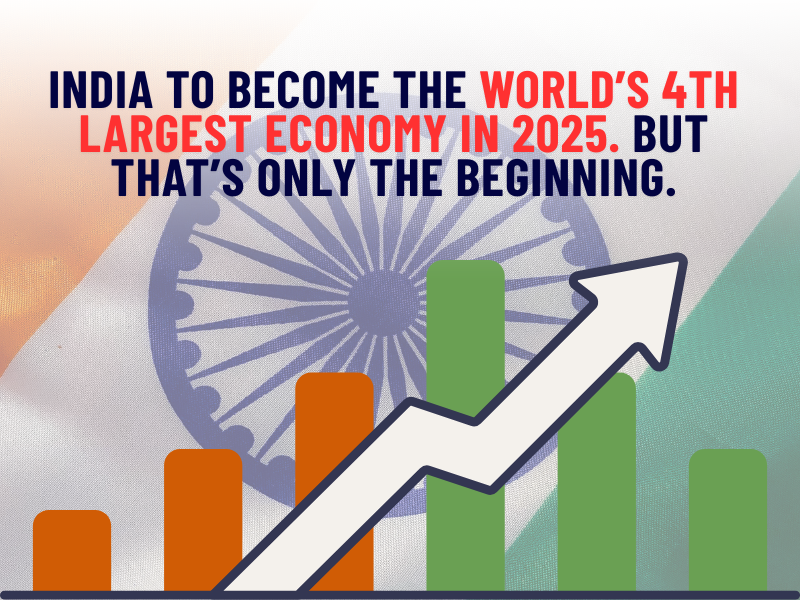According to the latest IMF projections, India is set to overtake Japan and become the world’s fourth-largest economy by 2025 in nominal GDP terms. For many of us who have tracked India’s economic journey closely, this moment has been a long time coming. But it also raises a deeper question: what does this milestone really tell us?
India’s growth story is no longer just about potential. It is now showing up clearly in the data. In the first quarter of 2025, India recorded a 7.4 percent GDP growth rate. That is the highest among all major economies. China grew at 5.4 percent. The United States managed just over 2 percent. Germany’s growth was flat, while South Korea even saw a mild contraction.
These numbers tell a broader story. India’s economic engine is not only running faster, it is also becoming more broad-based. Growth today is being driven by more than just services or IT exports. Manufacturing and construction are making strong contributions. This suggests that the economy is deepening, not just expanding.
Several factors are helping this shift:
- The government’s policy push over the last decade is beginning to show results. Initiatives like Make in India, Digital India, and the PLI schemes are no longer just slogans. They are translating into higher industrial output, stronger exports, and real job creation.
- Demographics remain a big advantage. With a median age under 30, India is one of the few large economies where the workforce is still growing. This young base is driving both consumption and innovation.
- The broader reform agenda – whether in taxation, digital governance, or financial inclusion – has laid the groundwork for higher efficiency and better delivery across sectors.
Of course, this progress is not without challenges. India’s per capita income still lags far behind developed nations. Infrastructure bottlenecks remain. Urbanisation is uneven, and many sectors continue to face productivity constraints. Global headwinds such as geopolitical tensions and supply chain disruptions also carry risks.
But there is one thing that has clearly changed: how the world views India.
Global investors are actively seeking exposure to Indian markets. Multinationals are shifting parts of their manufacturing footprint here. And in international policy circles, India’s voice carries more weight than ever before.
If current momentum continues, India could challenge Germany for the third spot in global GDP rankings by the early 2030s. But rankings aside, the more meaningful goal is to ensure that this growth creates durable value – for individuals, for businesses, and for the planet.
As someone who works closely with businesses and financial institutions, I see this moment as an opportunity. Not just for celebration, but for recalibration. India is no longer the story of tomorrow. It is very much the story of today.
And the decisions we make now will shape how far and how well we rise from here.

